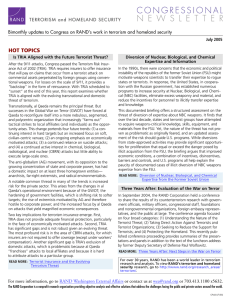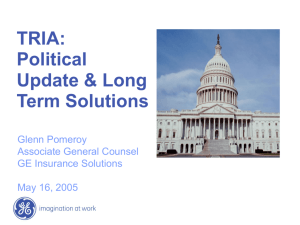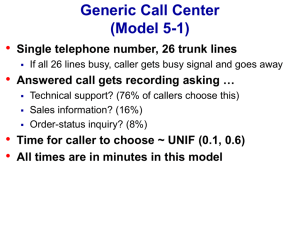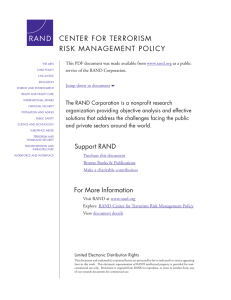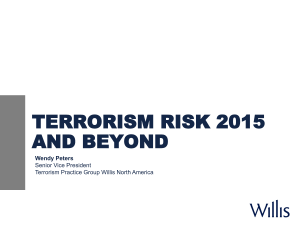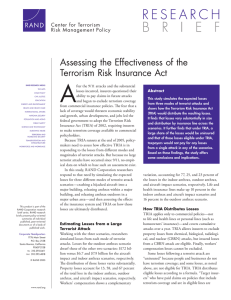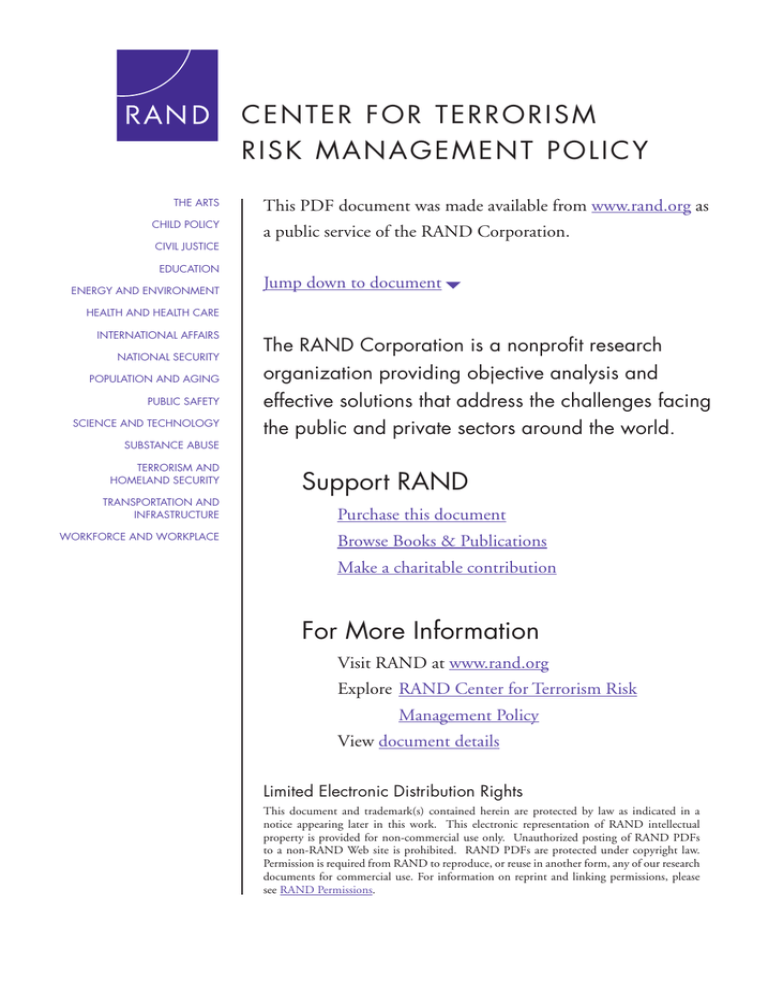
CENTER FOR TERRORISM
RISK MANAGEMENT POLICY
THE ARTS
CHILD POLICY
CIVIL JUSTICE
EDUCATION
ENERGY AND ENVIRONMENT
This PDF document was made available from www.rand.org as
a public service of the RAND Corporation.
Jump down to document6
HEALTH AND HEALTH CARE
INTERNATIONAL AFFAIRS
NATIONAL SECURITY
POPULATION AND AGING
PUBLIC SAFETY
SCIENCE AND TECHNOLOGY
SUBSTANCE ABUSE
TERRORISM AND
HOMELAND SECURITY
TRANSPORTATION AND
INFRASTRUCTURE
WORKFORCE AND WORKPLACE
The RAND Corporation is a nonprofit research
organization providing objective analysis and
effective solutions that address the challenges facing
the public and private sectors around the world.
Support RAND
Purchase this document
Browse Books & Publications
Make a charitable contribution
For More Information
Visit RAND at www.rand.org
Explore RAND Center for Terrorism Risk
Management Policy
View document details
Limited Electronic Distribution Rights
This document and trademark(s) contained herein are protected by law as indicated in a
notice appearing later in this work. This electronic representation of RAND intellectual
property is provided for non-commercial use only. Unauthorized posting of RAND PDFs
to a non-RAND Web site is prohibited. RAND PDFs are protected under copyright law.
Permission is required from RAND to reproduce, or reuse in another form, any of our research
documents for commercial use. For information on reprint and linking permissions, please
see RAND Permissions.
This product is part of the RAND Corporation monograph series. RAND
monographs present major research findings that address the challenges facing
the public and private sectors. All RAND monographs undergo rigorous peer
review to ensure high standards for research quality and objectivity.
The Federal Role in
Terrorism Insurance
Evaluating Alternatives in an Uncertain World
Lloyd Dixon, Robert J. Lempert, Tom LaTourrette, Robert T. Reville
CENT ER FOR TE RRORI S M RI S K MA NAGEMENT POLICY
The research described in this monograph was conducted within the
RAND Center for Terrorism Risk Management Policy (CTRMP).
Library of Congress Cataloging-in-Publication Data
The federal role in terrorism insurance : evaluating alternatives in an uncertain world /
Lloyd Dixon ... [et al.].
p. cm.
ISBN 978-0-8330-4235-4 (pbk. : alk. paper)
1. Terrorism insurance—Government policy—United States. 2. United States.
Terrorism Risk Insurance Act of 2002. I. Dixon, Lloyd S.
HG8535.F43 2008
368.4'8—dc22
2007039017
The RAND Corporation is a nonprofit research organization providing
objective analysis and effective solutions that address the challenges
facing the public and private sectors around the world. R AND’s
publications do not necessarily reflect the opinions of its research clients
and sponsors.
R® is a registered trademark.
© Copyright 2007 RAND Corporation
All rights reserved. No part of this book may be reproduced in any
form by any electronic or mechanical means (including photocopying,
recording, or information storage and retrieval) without permission in
writing from RAND.
Published 2007 by the RAND Corporation
1776 Main Street, P.O. Box 2138, Santa Monica, CA 90407-2138
1200 South Hayes Street, Arlington, VA 22202-5050
4570 Fifth Avenue, Suite 600, Pittsburgh, PA 15213-2665
RAND URL: http://www.rand.org
To order RAND documents or to obtain additional information, contact
Distribution Services: Telephone: (310) 451-7002;
Fax: (310) 451-6915; Email: order@rand.org
Summary
Introduction
After the 9/11 attacks, most commercial insurers began excluding terrorism losses from
their property-insurance policies, which previously had not identified the terrorism
threat as a separate peril. Concerned that the unavailability of terrorism insurance
would impede postattack economic recovery and hinder growth, Congress responded
with the Terrorism Risk Insurance Act of 2002 (TRIA). TRIA requires commercial
property-casualty insurers to offer insurance for losses suffered in terrorist attacks, and,
in return, the federal government agrees to reimburse insurers for a proportion of claim
payments that exceed a certain threshold amount. Congress amended TRIA in 2005,
but TRIA will expire at the end of 2007 unless Congress takes further action.
After five years of support, the federal government’s role in the market for terrorism insurance remains a subject of wide-ranging debate. Some envision TRIA as a temporary program needed only while insurers develop the tools and build the financial
capacity to insure against terrorism risk. Others see a strong federal role in providing
terrorism insurance as an ongoing necessity. Indeed, in the face of a growing awareness of the risk of nuclear, biological, chemical, and radiological (NBCR) attacks and
routine exclusions of NBCR losses from coverage even when conventional attacks are
insured, Congress is now considering not only whether to extend the program but also
whether to expand it to improve the availability of NBCR coverage.
This monograph aims to contribute to this ongoing policy debate by addressing
two directly relevant questions:
• What would be the implications of allowing TRIA to expire at the end of 2007?
• What would be the effects of modifying TRIA to improve the availability and
affordability of insurance for NBCR attacks?
xiii
xiv
The Federal Role in Terrorism Insurance: Evaluating Alternatives in an Uncertain World
Analytic Approach
In answering these questions about the federal government’s role in providing terrorism insurance, we used a simulation model to compare the outcomes of TRIA and
potential alternative government interventions across a very wide range of plausible scenarios. We also used a robust decisionmaking (RDM) approach to handle the numerous, deep uncertainties that can confound any analysis of this topic. In the following sections, we discuss the program alternatives considered, the outcomes evaluated,
the simulation model that relates the interventions to the outcomes, and the RDM
approach used to exploit this model.
Program Alternatives Considered and Outcomes Evaluated
We considered three main alternative federal government interventions in the market
for terrorism insurance:
1. TRIA as currently configured
2. no government program (the equivalent of allowing TRIA to expire)
3. TRIA modified to include NBCR coverage.
The first intervention replicates the current program as it exists in 2007, while the
second intervention allows TRIA to expire. The TRIA-with-NBCR-coverage intervention modifies the current program by requiring insurers to offer policies that cover
both conventional and NBCR attacks for a single price. In this alternative, policyholders must accept coverage for both conventional and NBCR coverage or decline terrorism coverage altogether. The monograph examines four variants of this intervention
that differ in two key dimensions: the insurer deductible and the program cap.
The TRIA deductible refers to the maximum amount of insured losses for which
insurers remain entirely responsible. Above the deductible, the federal government
reimburses insurers for a proportion of their payments. This reimbursement comes
from a mix of taxpayer funds and a federally mandated surcharge on future insurance policies. The higher the deductible, the greater an insurer’s potential costs and,
therefore, the more an insurer will charge for terrorism insurance. This monograph
examines two levels of deductible for the TRIA-with-NBCR-coverage interventions:
one identical to that of the current TRIA program, which is equal to 20 percent of an
insurer’s total written premiums on the insurance lines that the TRIA program covers,
and one in which the deductible falls to 7.5 percent of insurer premiums.
The TRIA program cap refers to the provision in the TRIA legislation that limits
total payments by insurers, future policyholders, and taxpayers for losses to no more
than $100 billion. Because the legislation does not specify who is liable for losses
beyond this amount, some insurers have expressed uncertainty about whether they
would be directly or indirectly liable for any loss above the cap. Because many NBCR
attacks could involve losses greater than $100 billion, an insurer’s uncertainty about
Summary
xv
the “hardness” of the program cap increases its expected losses and, therefore, reduces
its willingness to offer NBCR coverage. Thus, this monograph examines two types of
caps for the TRIA-with-NBCR-coverage interventions: one that retains the current
TRIA cap and one in which the cap becomes unambiguously binding (a “hard” cap).
To harden the cap, we assume that the government would guarantee to pay all the
insured losses from $100 billion to $650 billion.
For each of the TRIA, no-government-program, and TRIA-with-NBCRcoverage interventions, we evaluated performance using five outcome measures. Two
measures—the fraction of losses that remain uncompensated after an attack and
the cost to taxpayers—represent outcomes broadly reflecting impacts on society as a
whole. Three measures—the fraction of insurance industry surplus used to compensate losses, the fraction of losses paid by the insurance industry, and the cost to future
policyholders—represent outcomes reflecting the operation of the insurance marketplace and the role the insurance industry plays in bearing terrorism risk. Unlike previous studies, when calculating cost to taxpayers, we considered not only payments
through the TRIA program but also payments made after an attack to provide compensation for uninsured losses or unpaid insured losses. We restricted our attention to
property and workers’ compensation (WC) losses. The TRIA program addresses other
insured losses, such as losses on liability insurance policies, but they were beyond of
the scope of this study.
We also examined the impact of the various government interventions on the
take-up rate for terrorism insurance, which is an important intermediate variable that
drives the five outcome measures considered. The take-up rate on property insurance
policies refers to the proportion of property policies that have coverage for terrorism
attacks and can differ for conventional attacks and NBCR attacks. The take-up rate
for WC policies is 100 percent, because WC policies cover losses regardless of cause.
When take-up rates are high, the insurance industry plays a larger role in compensating losses from terrorist attacks. When take-up rates are low, property owners’ losses
remain uncompensated unless the federal government pays them.
The Robust Decisionmaking Approach
Many of the most important underlying factors, or parameters, that determine the performance of the different government interventions, such as the frequency and magnitude of terrorist attacks, insurer beliefs about the hardness of the existing TRIA cap,
and government assistance after an attack for businesses that fail to purchase terrorism insurance, are deeply uncertain. That is, there is no empirically based agreement
on the value of these parameters or even the proper probability distribution to place
over their plausible values. Policymakers and stakeholders implicitly make assumptions
about these parameters that guide their decisions, but the assumptions can vary widely,
contributing to vastly divergent views about the appropriate policies. Thus, this monograph considers the performance of the alternative government interventions over a
xvi
The Federal Role in Terrorism Insurance: Evaluating Alternatives in an Uncertain World
very large number of plausible futures that capture a wide range of attacks, beliefs
about the existing TRIA cap, levels of postattack government compensation, and other
key factors. The monograph then uses RDM methods to identify patterns of outcomes
generally observed across this broad range of futures and thus should help policymakers more confidently choose among the alternative government interventions despite
the uncertainties involved.
The simulation model developed to evaluate outcomes over a wide range of futures
includes a terrorist-attack model, a take-up rate model, a model of postattack government compensation, and an insurance-compensation and loss-distribution model.
• The terrorist-attack model predicts losses and probabilities of a large number of
conventional and NBCR attacks of widely differing sizes.
• The take-up rate model predicts take-up for each of the TRIA-with-NBCRcoverage interventions based on the price of terrorism insurance, which is, in
turn, determined by the cost to insurers of providing that insurance. We calibrate
the take-up rate model to estimates in the literature for take-up rates with and
without the current TRIA program.
• Given the uncertainty about what business assistance programs will be available
after an attack, the postattack government compensation model considers levels
of postattack government compensation that range from 0 percent to 75 percent
of total uninsured and unpaid insured losses.1
• The insurance-compensation and loss-distribution model allocates losses caused
by an attack across insurers, taxpayers, and businesses affected by the attack (in
the form of uncompensated losses) and future insurance policyholders.
The hardness of the existing TRIA cap plays a key role in the both the take-up
rate model and the insurance-compensation and loss-distribution model. For example,
if the current cap is perceived to be very soft, hardening it will make a great deal of difference. Given the considerable uncertainty over the hardness of the cap, we consider
scenarios in which the insurers are responsible for no insured losses and unpaid insured
losses over the $100 billion TRIA program cap (a hard cap) up to scenarios in which
insurers are responsible for 75 percent of such losses (a very soft cap).
1
At the bottom of this range, government assistance is completely independent of the amount of uninsured
loss and unpaid insured losses, which might be the case if government assistance were based only on the size of
the attack and not the amount of uninsured losses. At the top of this range, the government will compensate
most losses suffered by businesses without terrorism insurance. The higher the postattack compensation the
government chooses to offer, the smaller the fraction of losses that are uncompensated but the higher the cost to
taxpayers.
Summary
xvii
Key Findings
Using this analytic approach, we answered the two questions posed earlier.
Consequences of Allowing TRIA to Expire
TRIA has positive effects on the insurance market for conventional attacks relative to
letting the program expire: The proportion of property-insurance policies with terrorism coverage is higher and the proportion of losses that remain uncompensated is lower
for conventional attacks with TRIA than without TRIA.
TRIA’s performance differs for larger and smaller conventional attacks. For
conventional attacks with less than about $40 billion in total losses, TRIA increases
the proportion of losses compensated by insurers relative to scenarios in which TRIA
has expired and reduces taxpayer costs, once postattack government compensation is
considered. For attacks with losses greater than about $40 billion, TRIA can reduce
the role the insurance industry plays in compensating losses and can significantly
increase the cost to taxpayers relative to scenarios without TRIA. For comparison,
note that the attack on the World Trade Center caused roughly $23 billion in insured
property and WC losses.
Even though TRIA saves taxpayers money only for conventional attacks causing less than $40 billion in damage, the expected annual taxpayer cost considering all
types of attacks (conventional and NBCR) is lower with TRIA than without TRIA
over a wide range of assumptions about the relative probabilities of large and small
attacks and government compensation of uninsured and unpaid insured losses. This
result holds because terrorism experts believe larger attacks to be far less likely than
smaller ones. The higher taxpayer expense from government reimbursement in large
and rare terrorist attacks is offset by the lower taxpayer cost in the likelier smaller
terrorist attacks leading to net taxpayer savings. The costs are lower in the smaller
attacks, because insurers, relieved of the risk from large attacks, offer lower prices,
which increases take-up rates, lowering ex post government compensation and increasing the insurance share of compensation. The expected taxpayer costs remain lower
under TRIA than without TRIA as long as the government compensates more than
about 5 percent of uninsured and unpaid insured losses in the aftermath of an attack.
In contrast to the findings for conventional attacks, TRIA has done little to
improve outcomes after NBCR attacks because of the continued low take-up rate for
insurance coverage against NBCR attacks. More than 30 percent of the loss remains
uncompensated in roughly 55 percent of the scenarios examined with or without TRIA
in place. The primary benefit of TRIA for NBCR attacks is that the cap somewhat
reduces the threat to the ongoing health of the insurance industry associated with large
WC payouts. While this limited support of WC has value, many see the continued low
take-up rate for property insurance against NBCR attacks as a significant gap in the
nation’s ability to manage terrorism risk.
xviii
The Federal Role in Terrorism Insurance: Evaluating Alternatives in an Uncertain World
Consequences of Expanding the Terrorism Risk Insurance Act of 2002 to Cover
NBCR Attacks
To address the study’s second question, we evaluated, as noted previously, four variants to TRIA that require insurers to offer bundled policies that cover terrorism losses
due to both conventional and NBCR attacks—variants that differ in their deductibles
and the hardness of their program caps. This analysis concluded that requiring terrorism policies to cover both conventional and NBCR attacks without changes in other
program features such as the program cap or the insurer deductible may not improve
outcomes much for NBCR attacks and may have significant adverse consequences for
coverage of conventional attacks.
However, modifying the cap and deductible can improve outcomes for a program that requires insurers to offer both conventional and NBCR coverage. Specifically, hardening the cap and reducing the deductible from 20 to 7.5 percent generates
outcomes comparable to those under TRIA in several key dimensions for scenarios
associated with conventional attacks and significantly improves outcomes for scenarios associated with NBCR attacks. With such changes, the fraction of NBCR
attack scenarios with uncompensated losses greater than 30 percent drops to only 11
percent compared to 56 percent under TRIA. This decline owes both to the higher
take-up rates for NBCR coverage and government payment of all the insured loss
between $100 billion and $650 billion.
Analogous to the finding for conventional attacks under the current version of
TRIA, taxpayer cost is higher under TRIA with bundled NBCR coverage, a hard cap,
and a 7.5 percent deductible than it is under TRIA for NBCR attacks that produce
more than $40 billion in losses, but it is lower for many of the smaller NBCR attack
scenarios examined. Because the probability of large attacks is perceived to be much
lower than that of smaller ones, overall expected taxpayer cost is lower for a program
that hardens the cap, lowers the deductible, and requires bundled NBCR coverage
than it is for TRIA over a wide range of assumptions about the relative risk of large
and smaller attacks and about the proportion of uninsured and unpaid insured losses
compensated by the government. In this case, expected taxpayer cost will be lower
given existing estimates of the relative probabilities of large and smaller terrorist attacks
as long as the government compensates more than about 25 percent of uninsured and
unpaid insured losses. Once again, government reimbursement of large losses in rare
attacks lowers prices, which encourages NBCR take-up that reduces ex post government compensation in likelier smaller attacks.
Because of the uncertainty over the existing TRIA cap’s hardness, our analysis
suggests that both hardening the cap and lowering the deductible are critical to achieving positive outcomes when TRIA is expanded to require insurers to offer coverage for
both NBCR and conventional attacks. If the existing cap is quite soft (that is, insurers may be liable for some fraction of losses above the $100 billion cap), lowering the
deductible alone does not improve outcomes for NBCR attacks and can result in a
Summary
xix
deterioration of program performance for conventional attacks. If the cap is already
fairly hard, hardening the cap would not make much difference, and lowering the
deductible becomes key to avoiding adverse outcomes under TRIA. Hardening the cap
while lowering the deductible is a robust strategy that effectively addresses the substantial uncertainty over how insurers perceive the hardness of the current cap.
Overarching Conclusions
Looking across the analysis of both questions addressed by this study, we found that,
overall, both retaining TRIA and enhancing TRIA to cover NBCR attacks in a way
that hardens the cap and lowers the deductible can achieve positive outcomes by transferring risk for the largest attacks to taxpayers. In return, the insurance industry can
play a larger role in compensating losses for smaller attacks, and the resulting decline
in uninsured losses means less government compensation after an attack. Because the
probability of large attacks is thought to be far lower than the probability of smaller
attacks, both TRIA and TRIA with NBCR coverage can achieve these benefits while
reducing the expected taxpayer cost.
In choosing an extension to TRIA to better address NBCR attacks policymakers
must be careful to choose an intervention that achieves the desired goals and avoids
unintended consequences. For example, our analysis shows that simply extending
TRIA to require a bundled offer of NBCR and conventional coverage without changing other program features, such as the cap or the deductible, can actually make the
situation worse.
Implications for Recent Legislation
The U.S. House of Representatives has passed legislation that would extend and modify
the TRIA program (H.R. 2761). The bill requires insurers to offer coverage for conventional and NBCR attacks, includes detailed language that attempts to harden the
program cap, and lowers the deductible for NBCR attacks. While the interventions
considered in this monograph differ in some important ways from this legislation, our
analysis nonetheless provides some relevant insights.
The House bill includes several features identified in this monograph that will
likely improve the performance of the TRIA program. First, the bill attempts to address
the shortcomings of the TRIA program, identified here, for NBCR attacks. Second,
the bill attempts to harden the TRIA cap, which our analysis suggests is important
to successfully including NBCR coverage in the program. Finally, the bill lowers the
deductible for NBCR attacks, consistent with the findings in our analysis.
Our analysis differs from the House bill in two important ways. First, the legislation attempts to harden the cap with detailed language and methods for prorating
losses that exceed the cap, while the interventions considered here harden the cap by
xx
The Federal Role in Terrorism Insurance: Evaluating Alternatives in an Uncertain World
assuming the government guarantees to pay the insured loss more than $100 billion up
to $650 billion. Critical to the House bill’s impact on NBCR coverage will be insurers’
perceptions about whether the bill’s language is sufficiently strong to limit their actual
liability for any insured loss that exceeds $100 billion and how these perceptions evolve
over time.
Second, the House bill links offers for NBCR and conventional terrorism coverage differently from how the options considered in this study do so. As in our analysis,
the House bill requires insurers to offer coverage for conventional and NBCR attacks
that does not differ in terms, amounts, or other conditions for coverage for events other
than terrorism. We require policyholders to either accept or reject this bundled coverage. Under the House bill, in contrast, if the policyholder rejects the initial offer of
coverage, the insurer may offer coverage options that differ in terms, amounts, or other
conditions from the underlying policy. In particular, an insurer may offer coverage
for only conventional attacks and not NBCR attacks.2 The question remains whether
allowing policyholders to separately purchase conventional and NBCR coverage will
result in a sufficiently high take-up rate for NBCR coverage to generate outcomes
similar to those found in this analysis. Existing research suggests that the demand
for NBCR coverage is low; thus, allowing this coverage to be offered separately may
not result in substantial take-up. Further research on the effect of offering unbundled
versus bundled conventional and NBCR coverage is clearly warranted. However, given
the potential importance of this issue and the shortage of solid evidence on which to
base any judgments, Congress should plan to review the effects of new legislation on
NBCR take-up and revise its approach in the next few years as appropriate, even if it
chooses to reauthorize the overall TRIA program for a longer period.
Moving Forward
This monograph does not address some issues relevant to a full assessment of government intervention in the market for terrorism insurance. For instance, we do not assess
(1) the impact of changes in insurance price and take-up rate caused by TRIA and
enhancements to it on economic activity preattack or the speed of economic recovery
and resiliency of the economy after an attack, (2) how price changes might affect incentives for businesses to adopt measures to mitigate terrorism risk, (3) how any change in
the insurance industry’s existing willingness to bear terrorism risk might affect take-up
rates over time, or (4) how government programs affect the flow of new capital into
insurance markets or the development of instruments or strategies to spread insurance
2
That we modeled a different approach than the House bill should signal no policy preference. We settled on
the options analyzed here before the House bill was introduced and chose to bundle NBCR and conventional
coverage because (1) it seemed like the simplest way to extend TRIA to better address NBCR attacks, and (2) it
is analytically more straightforward to analyze bundled coverage than to analyze unbundled coverage.
Summary
xxi
risk. Including such issues would increase the comprehensiveness of our analysis but
would not affect the basic trade-offs identified here.
The models and methods used in this study apply to a wider range of questions
than those considered here. For instance, our simulations could be adapted to examine
a broader range of modifications to the TRIA program, such as different insurer copayments or different program caps. These tools could also examine a broader range of
government interventions in terrorism-insurance markets, including requiring policyholders to purchase terrorism coverage or pooling arrangements in which a surcharge
on insurance policies funds a pool that is then used to pay claims following a terrorist
attack.
The threat of terrorism does not appear to be a transitory phenomenon confronting the United States, and the role that insurance can play in mitigating this threat
warrants ongoing analysis.

